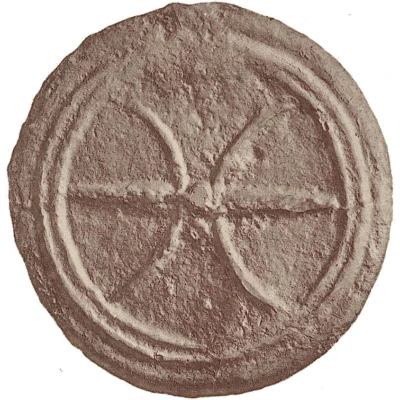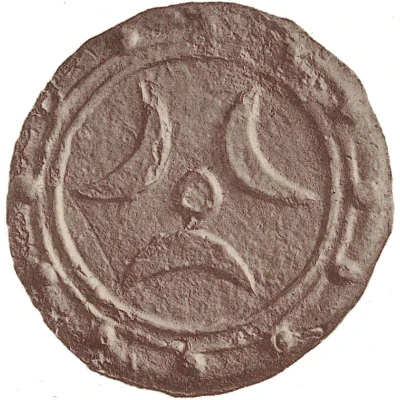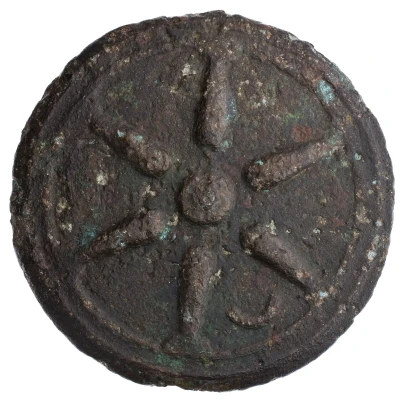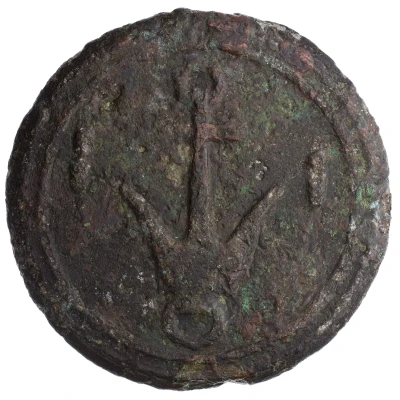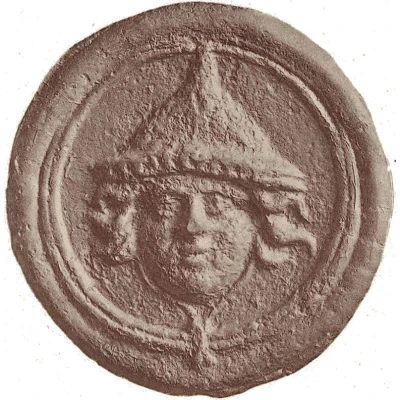
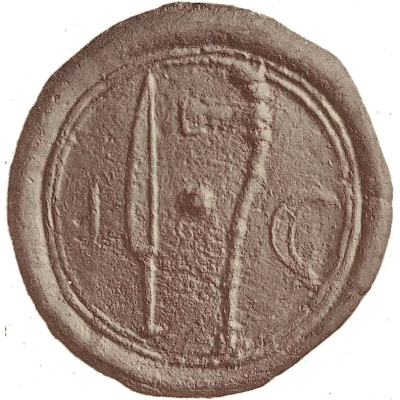

© Ernst Haeberlin; 1910. "Aes Grave". Joseph Baer, Frankfurt, Germany (CC0)
1 As Augur / Sacrificial implements 240 BC - 225 BC
| Bronze | 199.41 g | 70 mm |
| Issuer | Uncertain Etruscan mint (Etruria) |
|---|---|
| Type | Standard circulation coin |
| Years | 240 BC - 225 BC |
| Value | 1 As |
| Currency | As (circa 301-201 BC) |
| Composition | Bronze |
| Weight | 199.41 g |
| Diameter | 70 mm |
| Shape | Round (irregular) |
| Technique | Cast |
| Demonetized | Yes |
| Updated | 2024-10-09 |
| Numista | N#179705 |
|---|---|
| Rarity index | 100% |
Reverse
Sacrifitial implements, makaira (knife) and secespita (axe), all with dot at centre, value to the left, and crescent to the right.
Lettering: I
Translation: 1
Edge
Plain
Interesting fact
One interesting fact about this coin is that it features an image of an augur, which was a religious official in ancient Roman society who was responsible for interpreting omens and performing sacrifices. The image of the augur on the coin suggests that the Etruscans, who were known for their expertise in divination and prophecy, may have had a significant influence on Roman religious practices. Additionally, the fact that the coin was minted in an uncertain Etruscan mint adds to the mystery and intrigue surrounding the coin's origins and history.
